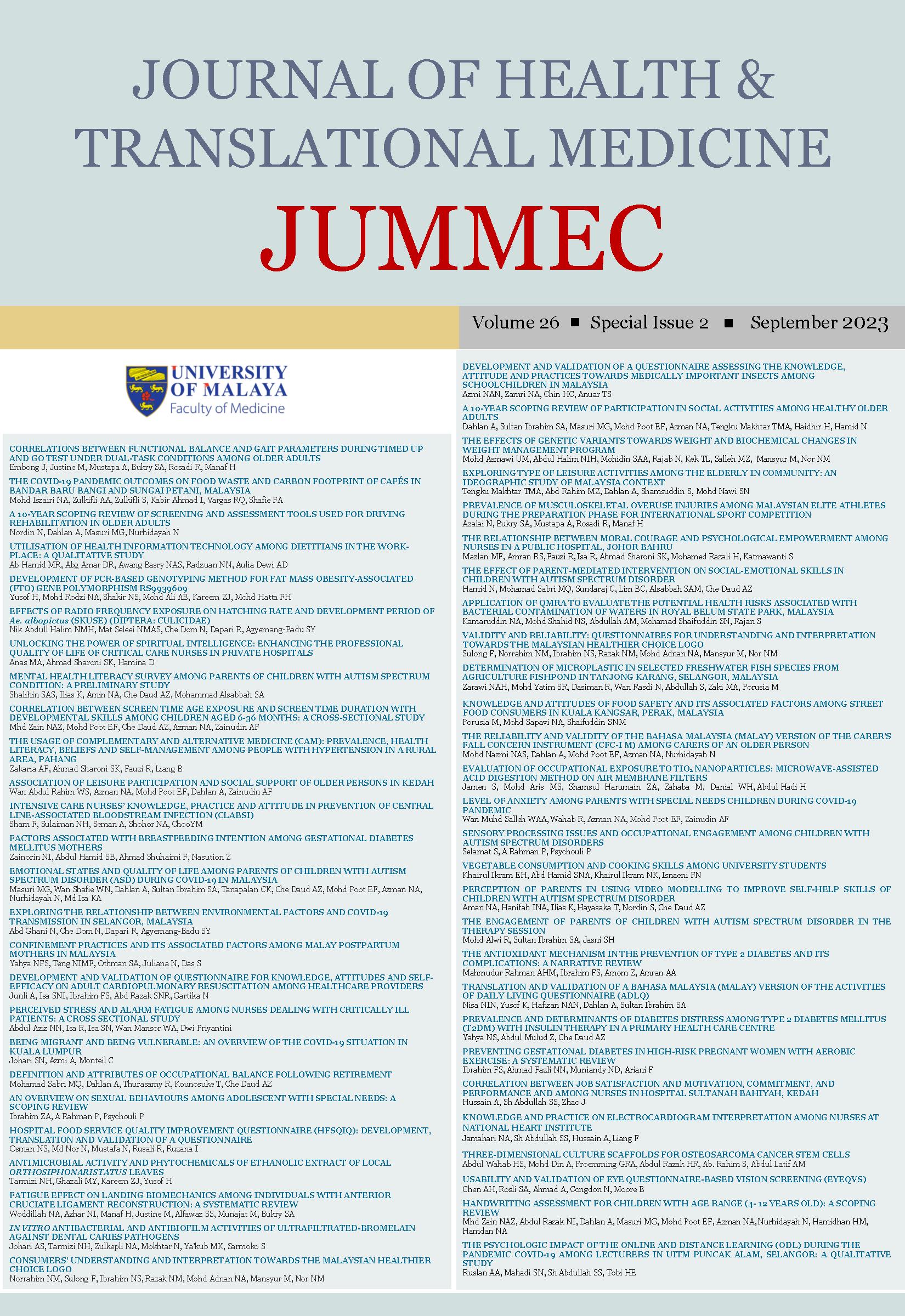EFFECTS OF RADIO FREQUENCY EXPOSURE ON HATCHING RATE AND DEVELOPMENT PERIOD OF AE. ALBOPICTUS (SKUSE) (DIPTERA: CULICIDAE)
Received 2023-07-06; Accepted 2023-07-30; Published 2023-09-15
DOI:
https://doi.org/10.22452/jummec.sp2023no2.6Keywords:
Radio Frequency, Ae. albopictus, Hatching Rate, Development Period, Egg MorphologyAbstract
Telecommunication technologies such as radio, cell phones, and television were developed to meet people's needs and have been widely used for decades. However, the invention relies on the transmission and reception of signals via radio (RF), which has increased concerns about the effects of RF fields on human health, including mosquito-borne diseases caused by exposure to these fields. To address these concerns, a study was conducted to evaluate the effects of exposure from RF on mosquitoes. The objective of this study is to determine the effects of exposure RF on hatching rate, development time, and egg morphology of the Aedes population. Under laboratory conditions, 50 Ae. albopictus eggs were exposed to three different exposures (control, low dose: 900 MHz and high dose: 18 GHz). The effects of exposure on hatching rate, development time and egg morphology were observed. This study revealed that higher doses of RF can shorten the hatching days of Aedes mosquitoes, but also slow down their development rate. In summary, this study provides important insights into the potential effects of exposure to RF on Aedes mosquito populations. Further research is needed to fully understand the effects of exposure RF on mosquito populations in natural environments and the potential public health implications.
Downloads
Downloads
Published
Issue
Section
License
All authors agree that the article, if editorially accepted for publication, shall be licensed under the Creative Commons Attribution License 4.0 to allow others to freely access, copy and use research provided the author is correctly attributed, unless otherwise stated. All articles are available online without charge or other barriers to access. However, anyone wishing to reproduce large quantities of an article (250+) should inform the publisher. Any opinion expressed in the articles are those of the authors and do not reflect that of the University of Malaya, 50603 Kuala Lumpur, Malaysia.


